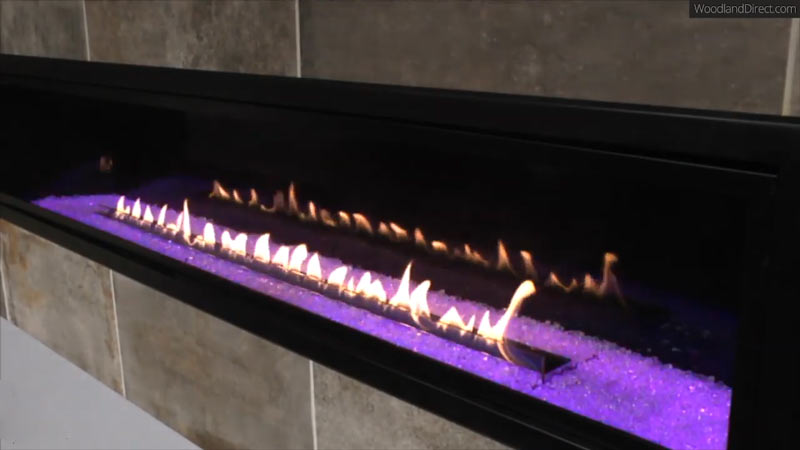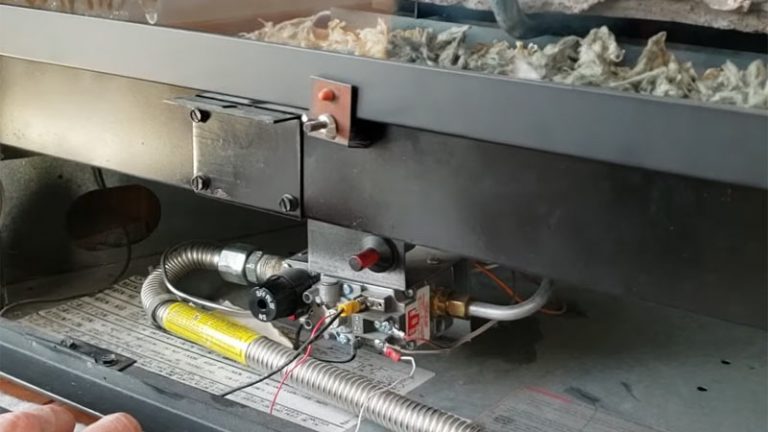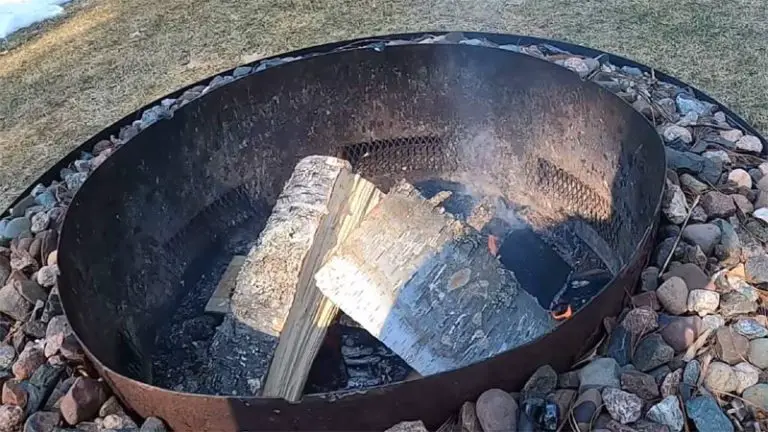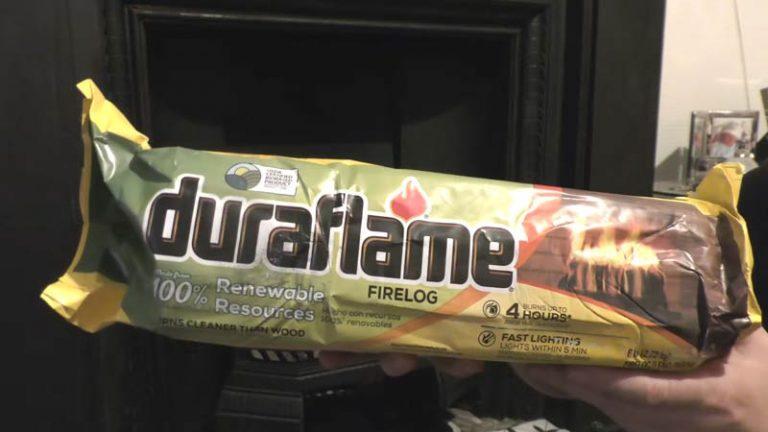Can A Ventless Fireplace Make You Sick

Ventless fireplaces are a popular choice for those who want to enjoy the beauty and warmth of burning wood without having to worry about smoke or CO levels.
However, these appliances can be dangerous if not used properly – carbon monoxide is released, and exposure can cause death. There are safer alternatives available that provide the same warming effect as a ventless fireplace with little danger of CO poisoning or death.
Learn about how to use your ventless fireplace safely before making any decisions – it could save your life. Remember: If in doubt, don’t use a ventless fireplace.
You'll Learn About
Can A Ventless Fireplace Make You Sick?
When using a ventless fireplace, be aware of the dangers that come with it. Carbon monoxide is released when these fires are used and can cause death in extreme cases.
There are safer alternatives to using a ventless fireplace that exists, so make sure to research them before making a decision. Be careful about how much exposure you have to carbon monoxide; even small levels can be deadly if not avoided altogether.
Make safety your top priority when choosing whether or not to use a ventless fireplace- there are safer options available without putting yourself in danger
Ventless Fireplaces Are Dangerous
Some people may be more susceptible to illnesses when around a ventless fireplace because it can increase the amount of airflow in the room. If you have asthma or any other breathing problems, avoid using a ventless fireplace.
Ventless fireplaces are dangerous and should not be used by children or pets either- they could get easily hurt if something falls on them while playing near the fireplace. Make sure that your home insurance policy covers damage from an improperly installed ventless fireplace before buying one, just in case something goes wrong later down the line.
Always use caution when using these types of fireplaces as there is always the potential for injury no matter how safe they may seem at first glance
Carbon Monoxide Is Released
If you have a ventless fireplace, make sure to use an exhaust fan when using it. Know the signs of carbon monoxide poisoning and get out if you see them.
Use common sense when opening your windows in cold weather – keep them closed if possible to avoid smoke or CO entering your home Install alarms on your windows and doors in case of fire or CO leakages Keep children and pets away from the area around the fireplace during use
Exposure Can Cause Dizziness
If you have a ventless fireplace, make sure to keep your windows closed while the fire is burning so that you don’t expose yourself to toxic gas. If you are worried about the health effects of exposure to smoke from a ventless fireplace, there are other ways to enjoy the flames without risking your safety.
Ventless fireplaces pose an even greater risk if children play in or near them unsupervised because they can easily get their hands close to the open flame. It’s important not only for adults but also for children under age 5 not to be exposed for long periods of time when a ventless fireplace is firing up or going out completely as this can cause serious breathing problems and death in some cases.
In order to reduce your chances of getting sick from exposure to smoke from a ventless fireplace, make sure it is properly installed and operated by someone who knows what they’re doing
Safer Alternatives To Ventless Fireplaces Exist
There are many safer alternatives to ventless fireplaces. One alternative is using a wood-burning stove or fireplace insert that uses an open flame. Another option is using a gas fireplace with automatic start and stop features, which creates less of an indoor air quality concern.
You can also use a portable electric fireplace instead of a traditional ventless model. Make sure you consult the manufacturer’s instructions for safety precautions before installing your new appliance
Can ventless gas logs make you sick?
The ventless gas logs that are often used in homes can be a potential source of health problems. These logs use a fan to circulate air around the burning wood, and this circulation can cause respiratory problems.
If you have any doubts about whether these logs could make you sick, consult with your doctor before using them.
Ventless gas logs are dangerous if not used properly
If your fireplace is installed without a proper ventilation system, carbon monoxide may be released and poisoning could occur. Make sure you have an adequate chimney cap, use a carbon monoxide detector to ensure you’re not being poisoned, and keep pets away from the flames in order to avoid any potential accidents.
A Ventless Fireplace Is Dangerous If Not Used Properly
If your ventless fireplace is not installed properly, it can become very dangerous and even deadly due to the release of carbon monoxide. Be sure to read the manufacturer’s instructions carefully before using your new appliance and make sure that your chimney is in good condition so that no CO levels build up inside of it.
Make Sure Your Chimney is Clean and in Good Condition
Even if your fireplace has a proper ventilation system, improper cleaning or maintenance can lead to high levels of Carbon Monoxide inside it- especially over time. Keep your chimney clean by sweeping out all debris at least once per year and checking for any cracks or openings which could allow harmful fumes into the house.
Use a Carbon Monoxide Detector
In case something goes wrong with your ventless gas log installation (like a leak), having an emergency CO monitor on hand will help you determine whether evacuation is necessary or not right away- saving valuable time during an emergency situation. Plus, knowing what level of CO concentration exists indoors helps protect yourself from long-term exposure risks as well.
Ventless Fireplaces Cause Carbon Monoxide Poisoning
Ventless gas logs are dangerous if not used properly. If your fireplace is installed without a proper ventilation system, carbon monoxide may be released and poisoning could occur. Make sure you have an adequate chimney cap, use a carbon monoxide detector to ensure you’re not being poisoned, and keep pets away from the flames in order to avoid any potential accidents.
Make Sure Your Chimney is Clean and in Good Condition
Even if your fireplace has a proper ventilation system, improper cleaning or maintenance can lead to high levels of Carbon Monoxide inside it- especially over time.
Keep your chimney clean by sweeping out all debris at least once per year and checking for any cracks or openings which could allow harmful fumes into the house.
Why are ventless fireplaces safe?
Ventless fireplaces are a type of fireplace that doesn’t use any kind of chimney. Instead, the smoke and heat are drawn in through the roof or walls of the room.
This makes them much safer than traditional fireplaces because there’s no chance for sparks to fly into the air and start a dangerous wildfire.
Ventless gas fireplaces use clean burning gas
The natural gas that is used in ventless fireplaces is burned without the release of harmful fumes. This means that there are minimal fumes released from these appliances, which are safe for both you and your home.
Regulators enable the gas to burn cleanly
Regulators help to ensure that the gas burns cleanly, minimizing the production of toxic fumes. In addition, built-in carbon monoxide and oxygen detectors will alert you if levels reach dangerous levels..
With built-in carbon monoxide and oxygen detectors, modern Ventless Gas Fireplaces ensure that the minimal toxic fumes that are released are not at dangerous levels.
Can a gas fireplace make you feel sick?
Before buying or installing a gas fireplace, be aware of its dangers to your health. If you’re in close proximity to a gas fireplace, be sure to wear protective gear and stay away from windowsills.
If you experience any symptoms after being exposed to carbon monoxide from a gas fireplace, seek medical attention immediately. Gas fireplaces are not for everyone so do your research before making the decision to purchase one for your home.
Remember that Carbon Monoxide can take hours or even days to cause serious harm, so if you experience any uncomfortable symptoms after being around a gas fireplace, don’t hesitate to seek help.
Is it safe to leave a ventless gas fireplace on all night?
Never leave a ventless gas fireplace on all night – it is not safe. Make sure your gas fireplace is unmonitored before leaving it on – and be sure to check the flame frequently.
Keep an eye on the flame and check for signs of trouble often- use safety precautions when entering and leaving a room near a gas fireplace. Don’t let children play with or operate any type of open-air burning appliance around the house- they can get hurt this way easily.
Always follow local regulations regarding open fires in order to stay safe and ensure that you are complying with all applicable rules
How do I know if my gas fire is leaking carbon monoxide?
If you notice any signs of leaks, test your gas fire to see if it’s leaking carbon monoxide. Make sure the heater is warm enough before using your gas fireplace and add wood chips or logs when needed.
Keep an eye out for high levels of carbon monoxide and don’t use the appliances in question until they’ve been checked by a professional if necessary. Replace a defective Heater or Valve to prevent CO poisoning from occurring in the first place
Do ventless fireplaces cause headaches?
If you have a ventless gas fireplace, be sure to install multiple carbon monoxide detectors near the fire. Ventless gas fires can cause ozone poisoning if not installed and used safely.
Make sure your family is aware of the dangers that come with using a ventless gas fireplace, especially children and pets who may wander in proximity to the unit. Install an adequate smoke detector in each room of your house if you have a ventless gas fireplace as well for added safety measures
Are ventless gas fireplaces safe in 2020?
There is a lot of debate around whether or not ventless gas fireplaces are safe. Some people believe that these furnaces can be dangerous because they don’t have any safety features in place to stop fires from happening.
Others argue that these types of furnaces are actually safer than traditional fireplaces, as the flames cannot spread easily inside them. Ultimately, it is up to the individual homeowner to decide if a ventless fireplace is right for their home.
Popular Choice
Ventless gas fireplaces are a popular choice for people who want to enjoy the warmth and ambiance of a wood-burning fireplace without having to worry about the smoke and hazardous gases that come with traditional chimneys. However, like all other types of fires, ventless gas fireplaces require proper ventilation in order to be safe.
Proper Ventilation Needed
Without proper ventilation, CO flames can quickly build up inside of a ventless fireplace and cause an unsafe fire condition known as carbon monoxide poisoning. This type of danger is especially serious if you have young children or pets in your home who might not be aware enough to take appropriate safety precautions when using this type of fireplace.
Install Accordingly
It’s important to note that even with proper ventilation, some harmful gasses may still escape from a ventless gas fireplace during use – particularly if it’s not installed properly or if there are any cracks or gaps in the system. Make sure that you install your appliance according to manufacturer guidelines and use appropriate safety equipment such as alarms and/or carbon monoxide detectors whenever burning natural gas in a ventless unit.
Carbon monoxide poisoning
One common problem associated with using ventless gas fireplaces is Carbon monoxide poisoning. Carbon monoxide poisoning occurs when hot ash builds up on top of the flame within the grill area due to insufficient draft (airflow). This can create an unsafe condition where sparks fly easily around the burner area – posing a risk of both personal injury and property damage in extreme cases.
Finally, always remember to use caution when handling any kind of stovetop fire – including that fueled by natural gas – especially if you’re not familiar with the operation and safety procedures for that particular type of old stove.
To Recap
Yes, a ventless fireplace can make you sick. A number of particulate matter, such as pollen and ash, is drawn into the air by the fan in a ventless fireplace, which can increase your chances of getting sick from airborne particles.
Keep your fireplace clean to avoid health hazards and enjoy the warm glow of an organic fire instead.





